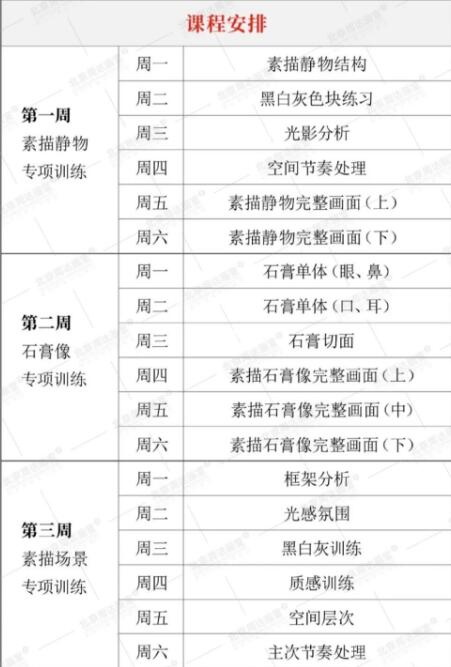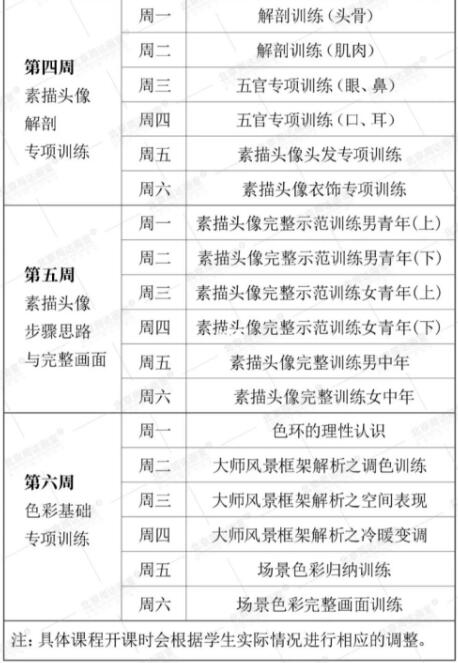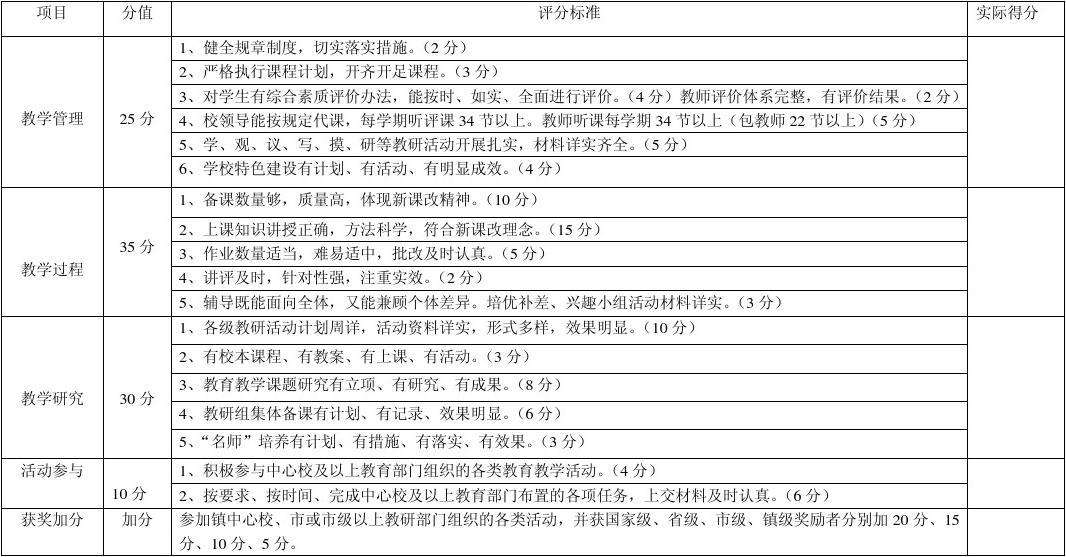A complete teaching system must include the following three aspects:
First, there must be perfect teaching content, just like the textbooks used in Grade 123 of primary school.
example:
Art Student Training‖ Zhouda Studio 22 Summer Vacation Class Schedule
【Basic Class】 Course Schedule
Suitable for students: suitable for students with zero foundation or weak foundation
Teacher-student ratio: 1:20-25 people
Teaching objectives: Popularize and cultivate students' basic cognitive abilities and observation methods of painting, be able to skillfully use various painting tools, master the most basic painting skills and abilities, and lay the foundation for further improvement. Ability


【Improvement Class】 Course Schedule
Suitable for students: suitable for students who have a certain art foundation or a good foundation and want to further improve their painting skills
Teacher-student ratio: 1:20-25 people
Teaching objectives: To improve students' painting cognition and technical ability, to help students feel the state of the senior high school training in advance, and to make leapfrog progress in professional foundation, professional direction, art examination planning, psychological quality, etc., and to connect the prestigious schools of the Academy of Fine Arts to lay a good foundation for the senior high school training.
Second, there must be reproducible teaching methods, how to teach children from zero to three years old, and how to teach children from four to six years old.
example:Observation and pedagogy of art training
By guiding students to observe, discover the inner structure and order of things, expand the knowledge framework, and lay the foundation for creation.
The observation method in the classroom is to let children observe in an orderly manner with a purpose.
That is, from the outside to the inside, from the surface to the inside, from the whole to the local observation.
What to observe? It is an orderly observation of the shape, color, texture and even spatial position of an object. With a comprehensive understanding of things, it can be integrated into useful information and stored in the brain for painting.
Students observe in an orderly manner and can perceive the characteristics of things in all directions. For example: painting a fruit, guide students to observe the shape and color of the fruit from different angles, touch it with their hands, and feel the texture of the fruit, whether soft, hard, rough or smooth and delicate. You can also cut the fruit and observe the structure, skin and nuclear tissue inside.
At this time, the eyes are observing the details as if under a microscope.
You even have to sniff and taste it... With a comprehensive understanding of the fruit, students will reasonably organize their own painting language to “speak.”
The lines will also come to life, and the rich colors have changed.
The third point is to have a data-based assessment method, so this assessment must be a specific and quantifiable assessment standard.
Assessment design
1. Excellent assignment

(1) Subject test questions
There are two situations: off-campus propositions and on-campus independent propositions. In-school propositions require that the difficulty coefficient of the test questions be 0.5-0.7, and the highest score must not be less than 85 points (100 points). Exams that do not meet the requirements will be deducted 2-3 points at their discretion.
(2) The average scores of the top three in a single subject are multiplied by 0.9, 0.8, and 0.7, respectively, to obtain three score lines A, B, and C.
The full score of the college entrance examination is 750 points, and more than 650 points can achieve the goals of prestigious schools and key undergraduate schools. A goal of more than 600 points can be achieved, and an undergraduate goal of more than 525 points can be achieved. These three college entrance examination goals correspond to the coefficients of 0.9, 0.8, and 0.7 respectively. For excellence, each subject should reach level A or above, and the minimum should not be lower than Level C.
For example: the top three scores in a single subject of the Chinese text exam are 130, 128, and 127.
The top three are divided into an average of 128 points, the score of line A is 128*0.9=115, the score of line B is 128*0.8=102, and the score of line C is 128*0.7=90.
If there are 8 students on Line A and above, the points are 8*2=16;
If there are 10 students in Line B and above, the points are 10*1=10
If there are 7 students in Line C and above, the points are 7*0.5=3.5
Then, the Chinese teacher's score is 16+10+3.5=29.5 points.
(3) Sort by total score and take the top 25 in the class. Each subject is assigned points according to the three score lines A, B, and C. 2 points are awarded for line A and above, and 1 point is awarded for line B and above.,
Reach the C line and above to score 0.5 points. No integration is performed below line C.
For example: In the last exam in mathematics, there were 8 people who reached the A-line and above, and 10 people in this exam, then the math teacher gets points (10-8)*2=4 points.
If the physics teacher has 8 people on line A and above in this exam, but the first three exams on line A and above are 6 people, 7 people, and 8 people, and the most recent exam is 6 people, then the maximum of 8 people are used as a reference. The physics teacher in this exam did not grow, and the score is zero.
Every year, the school enrolls less than 10 students from Tsinghua University and Peking University, and evaluates the top 25 in the class. It is conducive to the class to focus on promoting advancement, and it is conducive to subject teachers to concentrate their strength and give full play to the subject advantages of key students to make up for weak subjects.
2. Progress distribution
Taking into account the inconsistency of students' subject foundations, increase the score for progress. Based on the previous exam, it depends on the number of students in the A and B grades in the next exam. Students who reach Line A and above earn 2 points for every additional person, and students who reach Line B and above earn 1 point for every additional person. The number of students who have reached A and B in the last exam is subject to the most one time.
The parameters of the teaching performance appraisal can be adjusted according to the actual situation. For example, the number of assessments can be increased or decreased according to the actual situation, so as to avoid all assessments as much as possible, and the number of assessed students is 1.5 times or 2 times the target number.
The assessment score line can also be adjusted according to the situation. If the overall level of the student is high and there is an advantage in increasing the score, the score line can be determined by 0.85, 0.9, and 0.95. If the overall level of the student is general, the score line can be determined by 0.6, 0.7, and 0.8.
This is a well-established teaching system.


Leave a Reply